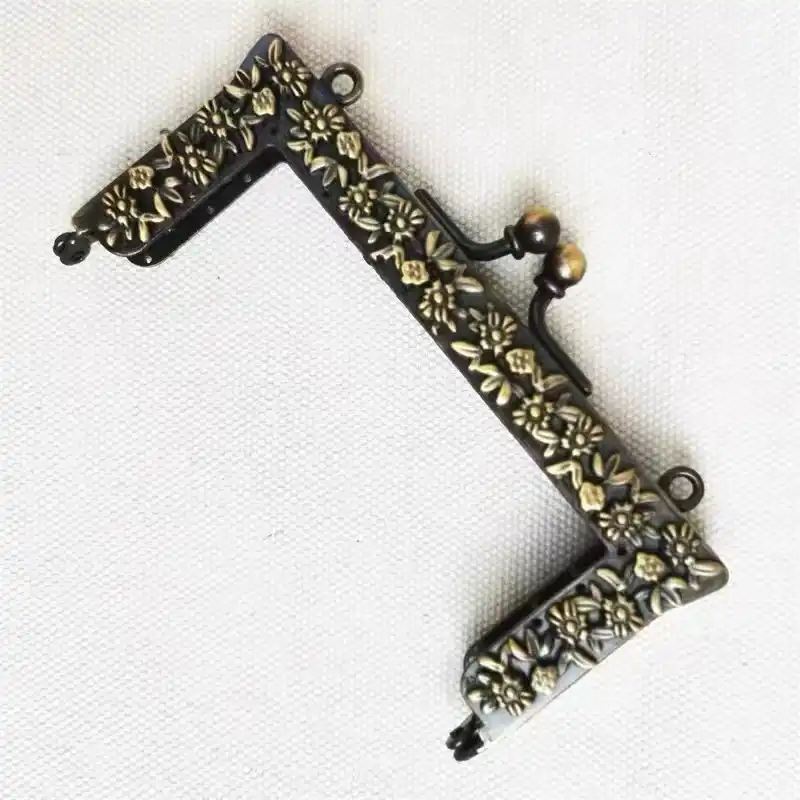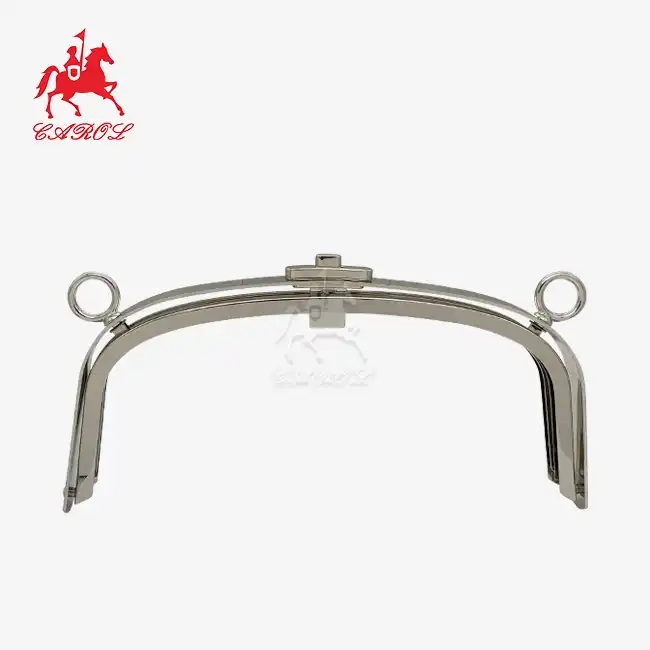How to sew purse frame?
A basic cloth pouch may be turned into a sophisticated clutch or handbag by sewing a purse frame. Although it can seem challenging at first, attaching a metal handbag frame is really rather feasible if you use the right techniques. You may improve your bag-making skills and learn how to make a purse frame properly by following this instruction.
Use the right tools for stitching
Getting the right equipment together is essential before beginning the stitching process. Select a sturdy needle that can penetrate several layers of fabric and interface as it will be your primary instrument. Leather or upholstery needles are perfect for this task. Selecting a strong, long-lasting thread that can withstand the pressure of often opening and shutting the purse frame—like nylon or polyester—is also very important.
Don't undervalue the significance of well made scissors or rotary cutters when it comes to cutting fabric accurately. When sewing by hand, using a thimble may protect your fingers, especially when working with heavier materials. Clips or wonder clips work better than pins to hold layers together since they won't rip your fabric.. Finally, if you need to work with the metal frame, a decent set of pliers will be useful.
Remember, the right tools not only make the job easier but also contribute to a professional-looking finish. Take time to assemble your toolkit before starting your purse frame project.

Mark alignment guides first
When installing a handbag frame, accuracy is essential, and establishing alignment guidelines is an important step that shouldn't be missed. Start by taking precise measurements of the purse's frame length. Mark the location of the frame on your cloth using this measurement. Use a fabric marker or tailor's chalk for clear, detachable lines.
At a distance of about 1/4 inch (6mm) from the upper edge of your cloth, make a seam allowance guide. This is going to be your stitching line. Consider drawing dashes along this line at regular intervals using a ruler for extra precision. When sewing, these markings will help you keep your threads even.
To make sure everything lines up precisely when put together, note any interfacing or lining that is part of your handbag design. Mark any places on the frame that could contain special features, such hinges or clasps, with additional care. These points often require special attention during the sewing process.
By taking the time to mark thorough alignment guides, you're setting yourself up for success in the subsequent steps. Clear markings act as a roadmap, guiding your needle and ensuring your purse frame sits exactly where it should.
Stitch with precision in the frame's groove
Now comes the most critical part of attaching your purse frame - stitching with precision. Usually, the frame contains a little channel or groove that is made to fit your stitches and cloth. To ensure a smooth and secure connection, you want to stitch as near to this groove as you can.
Start by lining up your fabric with your previously established guidelines within the frame. Use clips to hold everything in place. Use two strands to thread your needle, then securely knot the end for increased strength. Beginning on the wrong side of the material, insert your needle into the groove at one end of the frame.
Use even, tiny stitches as you sew. Between each stitch, try to leave around 1/8 inch (3mm), or even closer if your thread and fabric permit. Make sure your stitches follow the frame's curvature and are as straight as you can. Always be sure the needle is passing through the frame's groove as you raise it. For a neat appearance, this method not only conceals your stitching but also secures the cloth.
Go slowly through this procedure. If you rush, you run the danger of missing areas or uneven stitches, which might weaken your handbag. Do not push the needle if you run across resistance. Instead, use pliers to assist guide the needle through difficult areas or change your angle. To get a professional finish, keep in mind that accuracy and patience are your friends.
As you get closer to the end of the frame, be sure your cloth is still oriented correctly. Make any required corrections before to finishing the last stitches. Finally, secure your thread with a few backstitching threads, knot, and clip any extra.

Purse Frame Supplier: Carol
For those embarking on their purse-making journey, finding a reliable supplier for high-quality purse frames is essential. Carol, a professional factory specializing in hardware accessories and metal frames for handbags, leathers, and luggage, offers a wide range of options to suit your needs. With years of experience in product making, selling, and design, Carol provides various novel styles and multi-colors that have gained popularity in both domestic and foreign markets.
Making handbags, medical bags, and other sophisticated accessories is a great use for Carol's Triangle Flex Metal Frame, which measures 21.6 cm by 13.6 cm. This adaptable frame is composed of sturdy iron and aluminum, guaranteeing endurance and style, and comes in a light gold color. Carol stands apart because they can alter the fabrics, colors, and sizes to suit your needs, giving you the most creative freedom when designing your purses.
Selecting Carol as your handbag frame provider gives you access to a multitude of knowledge and quality control in addition to a product. They can provide a whole range of services, from design to packing, thanks to their in-house electroplating plant, which guarantees quality and uniformity at every stage. Please contact tony@carolxiao.com for further details or to discuss your requirements about purse frames. With their superior frames and unmatched service, let Carol help you realize your handbag ideas.
References
- Smith, J. (2021). The Art of Purse Making. Crafters' Digest, 15(3), 45-52.
- Johnson, E. (2020). Sewing Techniques for Metal Frames. Textile World, 8(2), 78-85.
- Brown, A. (2022). Precision Stitching in Accessories Design. Fashion Forward, 11(4), 102-110.
- Davis, M. (2019). Tools and Materials for Professional Bag Making. Artisan Quarterly, 7(1), 33-40.
- Lee, S. (2023). Innovations in Purse Frame Design. Accessory Tech Review, 9(2), 67-74.
_1753256285958.png)

_1754990596544.webp)









